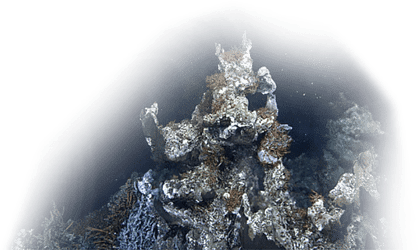MARINE INSTITUTE OF MEMORIAL UNIVERSITY NEWS RELEASE
March 10, 2021
The Fisheries and Marine Institute of Memorial University and partner, the University of Victoria’s Ocean Networks Canada, installed a seafloor observatory in Conception Bay last month to enable real-time monitoring of oceanographic conditions and marine life.
Equipped with specialized instrumentation, the $750,000 observatory monitors currents, waves, water temperature, salinity and underwater sounds. It also features a high-resolution camera developed by [SubC Imaging](https://www.subcimaging.com/) of Newfoundland and Labrador to collect time-lapse video of nearby flora and fauna.
Located four kilometres north of the Marine Institute’s (MI) Holyrood marine base, the observatory sits in 85 metres of water and sends real-time data via a seafloor, fibre-optic cable.
The observatory is expandable and will also serve as a development, testing and demonstration facility for subsea instrumentation operating in harsh environments.
The cabled observatory was designed and built by Ocean Networks Canada (ONC). ONC monitors the west and east coasts of Canada and the Arctic to continuously deliver data in real-time for scientific research that helps communities, governments and industry make informed decisions. The [Marine Institute](https://www.mi.mun.ca/) (MI) is an associate member of the ocean observation network.
# Year-round monitoring
Dr. [Katleen Robert](https://www.mi.mun.ca/departments/officeofresearchanddevelopment/ourresearchers/drkatleenrobert.php), Canada Research Chair in Ocean Mapping at MI’s [School of Ocean Technology](https://www.mi.mun.ca/departments/schoolofoceantechnology/), says the observatory provides a year-round window on marine life in Conception Bay.
“With current climatic trends, we are running out of time to establish the natural baselines of ecosystems, and early detection of change will be key to proactively adjusting our management strategies," she said.
“The Holyrood observatory will greatly extend our ability to obtain long-term, time-series data by allowing constant monitoring, even under ice. Its camera will provide year-round, high-resolution observations of an Atlantic Canada subtidal [benthic community](https://oceanservice.noaa.gov/facts/benthic.html), including the economically important snow crab.”
## 4D Oceans Lab
Dr. Robert’s [4D Oceans Lab](https://www.4d-oceans.com/) and a team of graduate students are mapping the spatial complexity of the ocean from the seafloor to the surface, the distribution of seafloor marine habitats and how those habitats respond to different human-induced and natural stressors.
[Rylan Command](https://www.4d-oceans.com/our-team), a master’s student in fisheries science and technology at MI, is using the observatory to characterize nearby seafloor marine life, such as snow crab, and to measure behavioural responses to the spring [phytoplankton](https://oceanservice.noaa.gov/facts/phyto.html) bloom in Conception Bay.
As part of a project funded by the [Marine Environmental Observation, Prediction and Response Network](https://meopar.ca/), Mr. Command will be using a fluorometer added to the observatory to measure chlorophyll concentration, including phytoplankton.
## ONC partnership
“Ocean Networks Canada is delighted to be working with Memorial University’s Marine Institute on the installation of one of our cabled observatory systems at their cold-ocean testbed site in Holyrood," said Kate Moran, president and CEO, Ocean Networks Canada.
"This observatory has multiple purposes – support for ocean science, advancement of Canada’s blue economy as an industry sensor test bed and for ocean education, outreach and public engagement."
Using cabled observatories, remote control systems and interactive sensors, and big data management, ONC enables evidence-based decision-making on ocean management, disaster mitigation and environmental protection.
Data and video from the Holyrood observatory is publicly available through [ONC](https://data.oceannetworks.ca/home?TREETYPE=1&LOCATION=2373&DEVICECATEGORY=5&TIMECONFIG=3). Later this month it will also be available on [SmartAtlantic](https://www.smartatlantic.ca/index.html), a decade-long initiative in ocean observation by MI.
## Ocean technology hub
“The Marine Institute is proud to partner with Ocean Networks Canada in launching one of its ocean observatory systems in Newfoundland and Labrador,” said Glenn Blackwood, vice-president of Memorial University (Marine Institute).
“It will complement our meteorological and oceanographic buoys already deployed in Holyrood Bay – adding another stream of data to our understanding of this environment and contributing to a controlled test environment for underwater vehicles.”
It’s part of the [ongoing](https://gazette.mun.ca/research/ocean-investment/) expansion of the Holyrood marine base, including construction of a new multi-purpose building that began in December and installation of subsea infrastructure.
- 30 -
For more information, please contact Moira Baird, public relations and communications officer, Marine Institute, at 709-330-3918 or mc.baird@mi.mun.ca; or ONC Communications, Ocean Networks Canada, at onc-comms@uvic.ca.
For science related inquiries, please contact Fabio De Leo, senior staff scientist at 250-661-3491 or fdeleo@uvic.ca.
**Read more:**
